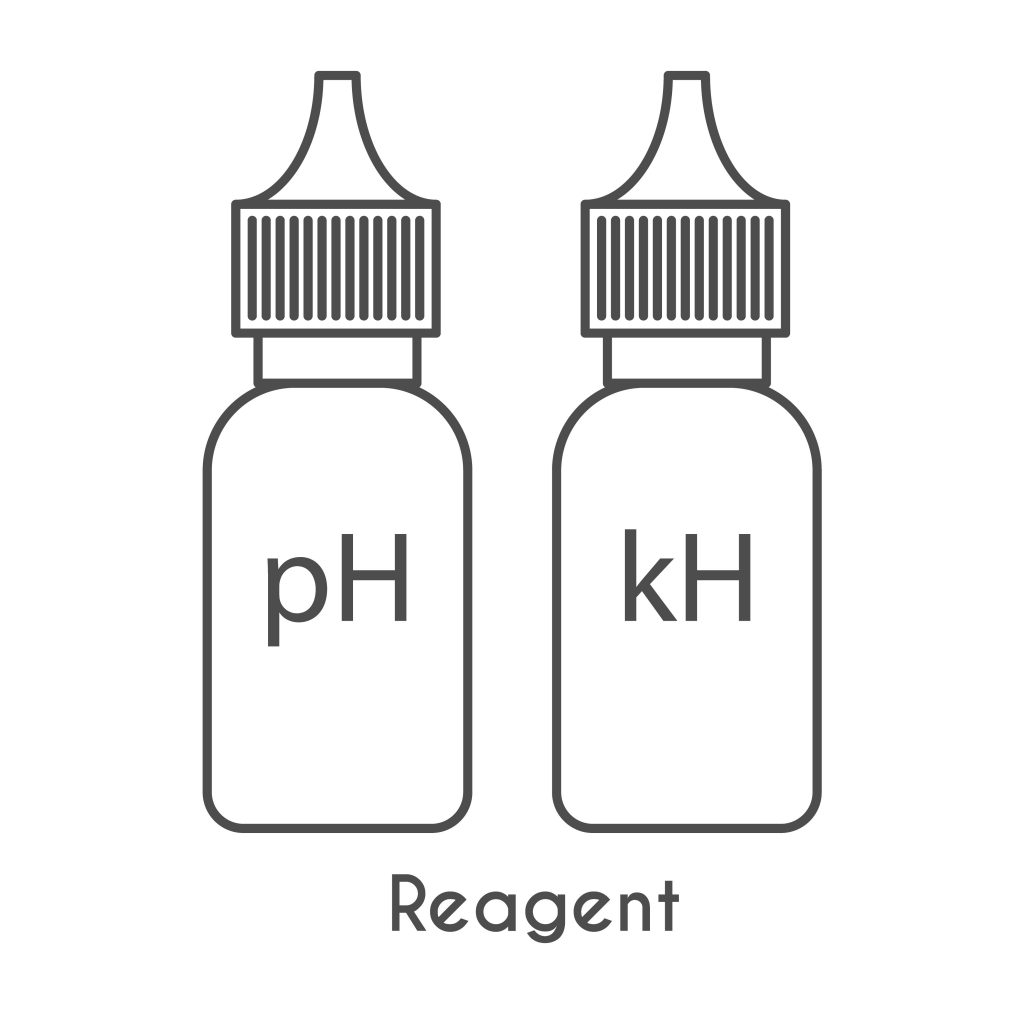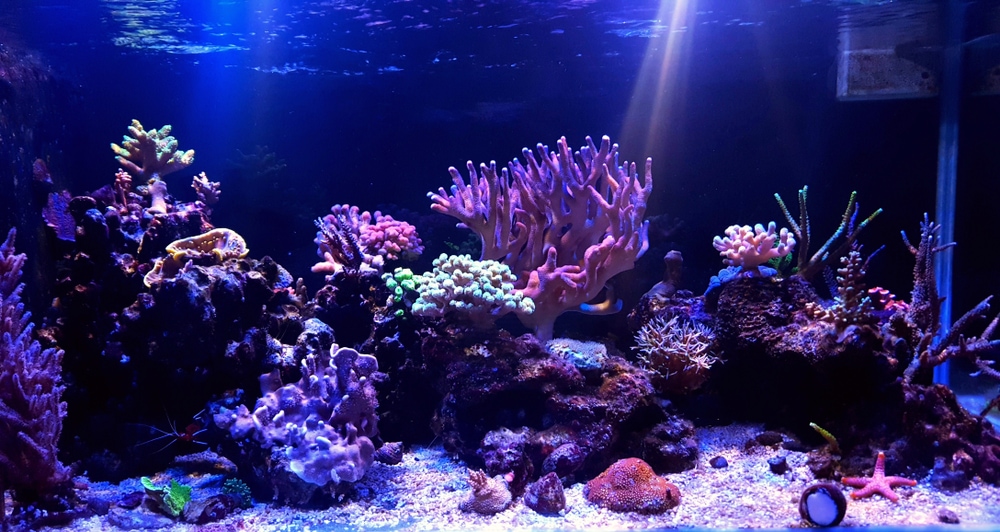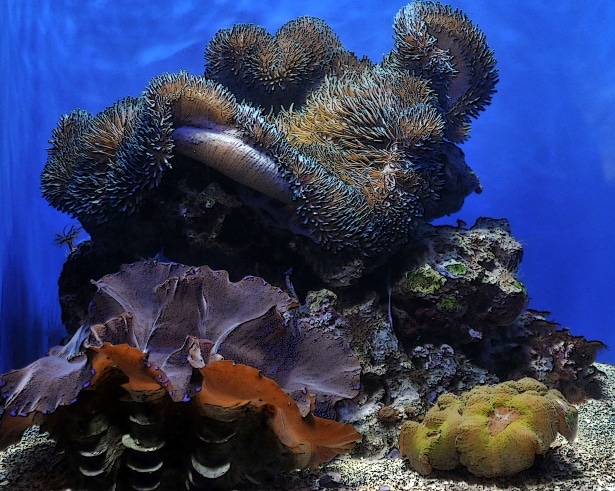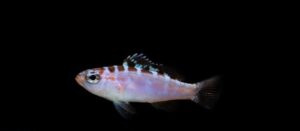 A major component of reefing and keeping saltwater aquariums that deters people from the hobby is the maintenance that is required to upkeep them. It may feel like reefing requires too much work, but it may also be that you have an uncertainty on how to maintain a saltwater aquarium. Luckily for you, this article will explain the basics of maintenance and how you can make it easier to do, resulting in a stable and happy reef tank.
A major component of reefing and keeping saltwater aquariums that deters people from the hobby is the maintenance that is required to upkeep them. It may feel like reefing requires too much work, but it may also be that you have an uncertainty on how to maintain a saltwater aquarium. Luckily for you, this article will explain the basics of maintenance and how you can make it easier to do, resulting in a stable and happy reef tank.
Most hobbyists would agree that water changes are not enjoyable. Although, they are one of the most effective methods of maintenance, as they can take large amounts of nutrients out of the water quickly.
There is a way, though, to reduce the number of water changes you need to do. If your filtration is good enough, you will not have to do as many water changes. You can replace the nutrient export that takes place during a water change by having a few different components in your filtration.
A protein skimmer is a great option for nutrient export. Skimmers are very popular equipment in the reef hobby, as most people have them in there sumps or hanging off the back. They simply skim protein from the water and collect it in a container called a collection cup. You will have to empty and clean the cup when it gets full. Protein skimmers can be expensive depending on the size and quality, but they are a standard piece of equipment every reef aquarium needs.
[generalhelp]
Another way to reduce nutrients is to use certain types of mechanical filtration, such as GFO (granular ferric oxide). GFO can be put in a bag and place anywhere in the sump or it can be put in a media reactor where it is most effective. GFO is especially known for removing phosphate, which is a nutrient that causes algae growth. It is important to note that you can use too much GFO and remove too much phosphate. For best results, you should change out the GFO every so often, which depends on the type you use.
Carbon is another popular mechanical filtration that will keep your water clear. It too has to be replaced every so often, which adds to the maintenance.
There are also natural methods of nutrient export. These methods, such as having excess surface area for bacteria and having a refugium, have proven to be very effective. Possibly the best way of eliminating nutrients is targeting it at its source, which is food and fish waste. When this waste breaks down, it turns into nutrients. These nutrients can then be broken down by beneficial bacteria. Having more of this bacteria will allow for lower nutrient levels. This bacteria needs to have a place to live, such as rocks and sand. You could simply add more rocks to your display tank or you could buy a type of rock media, such as Marine Pure blocks. This will give the bacteria more surface area to live in. These block can be put in any section of the sump, but they do especially well in a refugium. A refugium is a separate section in a sump where you can put sand, media blocks, copepods, and macroalgae. Macroalgae is another way to export nutrients naturally. The macroalgae feeds off the nutrients in the water and grows. You can then take chunks off of the macroalgae to physically take the nutrients out.
The most obvious part of how to maintain a salt water aquarium is the removal of large waste in the tank. This can be done using a filter sock, a foam block, or both. You will have to clean these out when they get filthy. Filter floss can also be used, but you will have to clean it and replace it more. There are two different types of filter socks: felt and mesh. Felt socks filter out smaller things, but have to be cleaned much more. Mesh socks only filter out larger things, but do not have to be filtered out as much. It is up to you to decide which is best for your tank and situation.
Dosing base elements (calcium, alkalinity, and magnesium) may be a major part of your tank’s

maintenance depending on what kind of corals you want to grow. If you just have soft corals or none at all, don’t worry about dosing these elements. If you have corals other than soft corals, your tank will probably need some form of base element replenishment. The most common way is dosing. Dosing allows for stability within your tank and increased coral growth. For dosing, you have a few ways of going about doing it.
The least favorable way of dosing would be doing it manually. You would have to remember to dose every day, which adds the possibility of forgetting.
You can also use a dosing pump and a controller. This could be one of the more expensive ways to dose, but it requires little to no maintenance, aside from refilling the dosing containers.
You can also dose using an auto top off. Use something such as kalkwasser in the auto top off reservoir, and as the water in your tank evaporates it will dose the tank. This is the easiest and cheapest automated method but is less precise.
Any of these methods will work, but it depends on which one you want to use and how much work you want to have to do.
Certainly, the most time-consuming part about maintenance is the cleaning, and there is no way around it.
You will have to clean your skimmer collection cup and filter sock or filter block the most. This is the type of cleaning you will have to do weekly. The best way to do it is to set a certain day of the week to be your tank cleaning day. Make sure that your weekly cleaning tasks are the first thing you do.
You will also need to clean the tank itself. The best way to do this is through a water change. Detritus will often build up on the bottom of the tank and on the rocks. By doing a water change you can suck up some of this waste and keep the tank clean. The number of water changes you have to do in a month will be determined by how good your filtration is. Once again, you should set a specific day or multiple days of the month when you do these water changes.
Eventually, all of your tank’s equipment will need to be cleaned. This includes the return pump, powerheads, the rest of the protein skimmer, media reactors, dosing pumps, auto top off, and any other in-tank equipment. This type of cleaning will not need to be done often. It may only be three times a year, but it may be more than that; simply use common sense when deciding if something needs to be cleaned or not.
This may seem like a lot of work, but doing it will ensure that your equipment lasts longer and works more efficiently for the tank. After getting into a strict maintenance schedule, it won’t seem so bad.
While there are some areas of maintenance that are impossible to avoid, you can get rid of some of the hassle through automation. With technology constantly evolving there are always new ways to make reefing easier. The downside is that easier often times means more expensive. For example, it is much cheaper to manually add fresh water to your tank to keep the salinity stable, but it is much easier to use an auto top off. Although these automatic devices may be more expensive, they create more stability and result in a better reef tank.
When it comes down to it, it is completely up to you and your goals to determine how to maintain a salt water aquarium. More ambitious goals will require better maintenance. It is important to keep this in mind when comparing your tank to others and your maintenance to others.
That’s how to maintain a saltwater aquarium. Now go and clean your filter sock, change the carbon, and make your tank beautiful.
[generalhelp]






Gideon Matta says
Having a h2o mixing station helps immensely too
Marc Spaunburg says
Not having one wishes I did. It would make things so much easier and less messy.
Luis Ruiz says
Interesting
Drew says
Good read!
Brett says
Good article, any new reefers would be glad to find this!
Becky says
Great info for someone starting a new tank!
Becky says
Great info for someone starting a new tank!
robert vice says
I like it I’ve used it once and had my life shit the next day they customer service guy he can be a real …. helpful guy all the time thanks g**g
Cole B Presley says
If you break it down day by day its not that hard
Jered Hedrick says
Excellent beginners guide to swf tanks.
Rhonda Cunningham says
Great information! Thanks!
Debbie Bybee says
Great read. I love reading articles and books about reefkeeping. No matter how long I have been in this hobby. Thank you.
damien jaggers says
Have to make time to keep it nice
Grant says
It honestly doesnt take that long. Maybe an hour every week or two. My tank right now is running so efficiently that I only do a water change every 2-3 weeks. Just make sure youre cleaning the glass, blowing out detritus from the rocks, and siphoning off waste on the sandbed.
damien jaggers says
Have to make time to keep it nice
Reeferbuild says
Keeping maintained can be tuff without automation but it’s well worth it
John Key says
It’s easy for me to loose sight of the basics. No matter how long you have been in the hobby, it’s important to read these types of clear and informative articles to make sure you haven’t overlooked something. New tech comes out all the time. You may learn something new.
Thanks for the guide!
eric m sear says
love this site
Darell says
Good info for a novice aquariust.
Jose Pacheco says
Really nice info for new and old hobbyists.
WWIIIREEF says
Great info here! Maintenance is key but doesn’t have to be painful!
Chris Livingston says
Lots of valuable information, Thais keep the tips coming!
james says
And don’t rush ANYTHING
james says
And don’t rush it
Richard Knox says
This is great information. You’ve help me all sorts of questions I never knew I had
angelyrojas23 says
Great info
angelyrojas23 says
Doing step by step ..
Jeremy Hunsberger says
Cant wait
Sean Simkins says
Great hobby. As expensive or hard as it seems, its weirdly VERY gratifying.
hwarrenfeltz says
WOW
Andrew says
Great article!
Allen says
Good stuff
zadok says
Great information. Wish I read this before starting my tank. Would have helped a lot.
Tara Fuller says
Great article, and good information. Salt water tanks can be very time consuming but so beautiful
james says
And remember take it slow only bad things happen fast in this hobby
Tyler.gore.90 says
All the information needed to get headed in the right direction. This hobby teaches me something new all the time. Even the most basic information needs to be refreshed every now and then. As advanced aquarist become entrapped in our own methods, we forget some of the fundamentals from time to time.
allison Dale lisney says
Nice post!
E. JONES says
Maintaining the reef is an intense hobby depending on livestock choice.
Melanie says
Great article. Salt water tanks do require some work. But I love watching my salt water fish, invertebrates and corals. Also remember don’t rush things when setting up your tank. Ask fellow reefers lots of questions and read lots of articles like the one above. Also when introducing a new fish to your current tank make sure you quarantine it first. Also make sure you have the right size systems and right foods for your salt water inhabitants.
mamucher says
Thanks for the info!
Steven Lombardi says
Great!
Kevin T says
I’m a saltwater newbie here. Just purchased a Waterbox 60.2 marine tank. I have done freshwater tanks since I was a child. This article was very informative as I continue to research and learn the ins and outs of saltwater. My goal is to start slow and not rush. Ultimately, I want to go with the Triton method and can’t wait to get started building the refugium with macroalgae, etc.
gcandy says
This helped me when I first started. Love this site
Jeremy Irwin says
A must read for a new reefer
Casey dolnick says
Love this!!
Blake Bush says
Great read! Really trying to go with the natural method, and so far it’s working great! Still need to get some clean chaeto tho
Jeff Britman says
Thanks for the info!
Kelly Tompkins says
I started out with a 20 gallon tank and graduated to a 90 gallon tank. I wish I had found this resource when I first started.
BevLop says
Great infor, I’m a newbie.
Debbie Bybee says
Great read. Thank you.
Joshua Andersen says
It’s all about keeping stable parameters and try to dabble with a lot things.
danieoue says
Very Helpfull
artaa1988 says
Great info
Nick nevins says
This will be great info for me starting my 90 gallon
CANDICE says
always love the articles!
CANDICE says
thanks for the tips!
CANDICE says
great tips!
Matthew Lucero says
awesome information
David Lee says
This is great for starters and novice. Wish I would have known these when I started.
Stacey Perry says
ATO is a lifesaver!
melissa says
good info
Bobby Daniels says
Well written write up
Tim J says
Great info to get started!
CHRIS MATHIS says
Great tips! Articles like this are essential for anyone new to the hobby.
Georgia says
Still working to make my maintenance routine smoother! Protein skimmer next on the list!!
Tami says
Great article, much better advice then I got from an old LFS.
Colton Rood says
Comment
Alex Lin says
Great info!! learned a lot from it!
lawrence zapata says
I currently have an AIO and will transition into a larger tank with a sump and fuge. I am thinking about going with a Ultimate Refugium Starter kit. Everything all in one. Easy Peasy.
Eugene Botts says
Spend time or money. I do entering natural and automate as much as possible.
Justin says
Thanks for the great article!
Tony Holliday says
Great article for a beginner. All the right information in a compact article.
Jessica Daly says
Great read! This has valuable information for an fish keeper.
akreef aquarium says
Thanks algae barn, great info.
Luis Ruiz says
Interesting
Luis Ruiz says
Interesting reading for beginners
Luis Perez says
Really good & helpful info!!!?